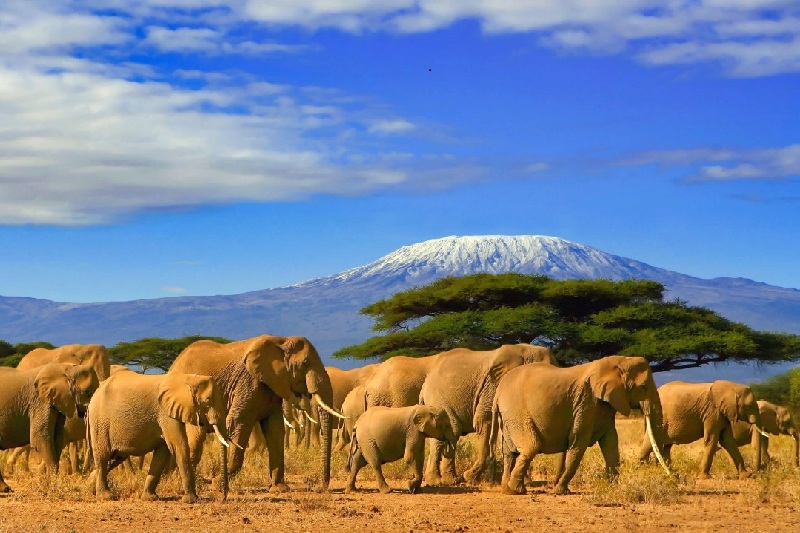
With views of the stunning Indian Ocean and its beaches to the shores of Lake Victoria, from the arable plains of its central plateau to the heights of Mt. Kilimanjaro, Tanzania is truly a diamond in the crown of East Africa. It is the biggest country in the region, formed in 1964 by the union of Tanganyika and Zanzibar. Among Tanzania’s neighbours are Kenya to the north and Mozambique to the south, with multiple landlocked nations to its west relying on it for access to the coast.
Tanzania’s natural beauty and sheer density of plant and wildlife species make it a top destination for Eco tourists. Almost a third of the country is protected, providing habitat for scores of species across 14 national parks. A fifth of Africa’s large mammals can be found within its borders, including lions, hippos, elephants, zebra, and wildebeest, whose mass migration through the Serengeti is a major draw for safaris.
We, at Pugmarks – The Nature Club, will be happy to customise your itineraries for your travel to weave this wild life destination in your travel plan and help you get a thrilling, unforgettable and pleasant WILD LIFE SAFARI experience.
While watching animals and birds in Zoos can be thrilling and exciting to some people, actually watching animals and birds in their natural habitats has its own charm and is the true delight of a nature and wildlife lover.
Tanzania’s oldest and most popular national park, also a world heritage site and recently proclaimed a 7th world wide wonder, the Serengeti is famed for its annual migration, when some six million hooves pound the open plains, as more than 200,000 zebra and 300,000 Thomson’s gazelle join the wildebeest’s trek for fresh grazing. Yet even when the migration is quiet, the Serengeti offers arguably the most scintillating game-viewing in Africa: great herds of buffalo, smaller groups of elephant and giraffe, and thousands upon thousands of eland, topi, kongoni, impala and Grant’s gazelle.
The spectacle of predator versus prey dominates Tanzania’s greatest park. Golden-maned lion prides feast on the abundance of plain grazers. Solitary leopards haunt the acacia trees lining the Seronera River, while a high density of cheetahs prowls the southeastern plains. Almost uniquely, all three African jackal species occur here, alongside the spotted hyena and a host of more elusive small predators, ranging from the insectivorous aardwolf to the beautiful serval cat.
But there is more to Serengeti than large mammals. Gaudy agama lizards and rock hyraxes scuffle around the surfaces of the park’s isolated granite koppies. A full 100 varieties of dung beetle have been recorded, as have 500-plus bird species, ranging from the outsized ostrich and bizarre secretary bird of the open grassland, to the black eagles that soar effortlessly above the Lobo Hills.
Popular wildlife reserves / sanctuaries in Tanzania where we can arrange a unforgettably pleasant safari experience for you are as follows –
1. Tarangire National Park
2. Lake Manyara National Park
3. Ngorongoro Conservation Area
4. Serengeti National Park
5. Arusha National Park
6. Gombe Stream National Park
7. Katavi National Park
8. Mount Kilimanjaro
9. Kitulo Plateau
10. Mahale Mountains
11. Mikumi
12. Mkomazi
13. Ruaha
14. Rubondo Island
15. Saadani
16. Saanane
17. Udzungwa Mountains
Besides these, we shall be happy to arrange trips for you in any other wild life sanctuary / national park of your choice (subject to it being available) in Tanzania. The most popular route is the NORTHERN CIRCUIT encompassing 4 parks namely – Tarangire, Manyara, Ngorongoro Conservation area and Serengeti.
We shall be happy to give you a quote for a group trip also.


